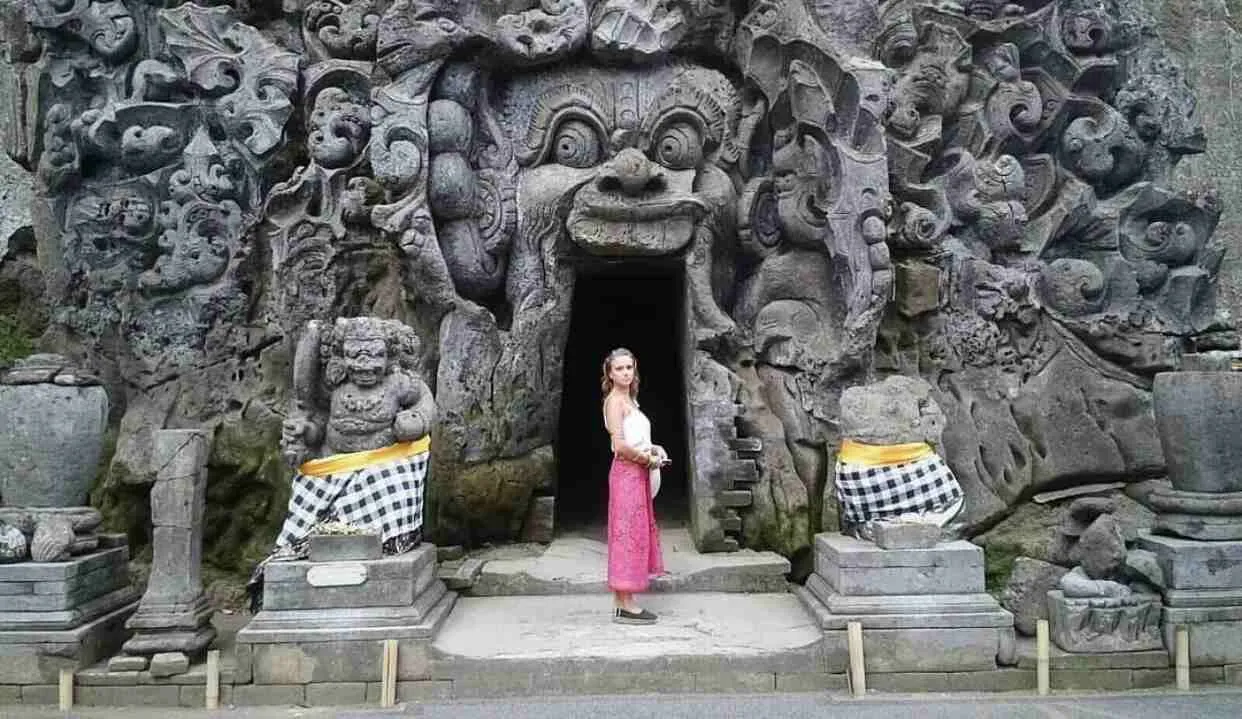
Goa Gajah Temple, also known as Elephant Cave, is a remarkable Hindu temple located in Bedulu village, Gianyar, Bali. Just a short 15-minute drive from the cultural hub of Ubud, this intriguing site seamlessly blends history, spirituality, and stunning architecture, making it a must-visit destination for travelers seeking to immerse themselves in Bali's rich cultural heritage.
Historical Significance
Dating back to the 9th century, Goa Gajah Temple is renowned for its mystical aura and historical importance. The term "Goa Gajah" translates to "Elephant Cave," but its name remains somewhat of a mystery. The temple was first referenced in 1923 when Dutch official LC. Heyting discovered important statues, including Hariti and Ganesha, within the vicinity, leading to its acknowledgment in Balinese history.
During the Warmadewa Dynasty's reign in the 10th to 11th centuries, the cave was likely used for spiritual meditation by Hindu priests who hand-carved its depths. The elaborate stone carvings, featuring grotesque faces intended to ward off evil spirits, and the beautifully detailed doorways create a striking entrance resembling a rock creature's mouth, setting the tone for the unique experience that lies ahead.
Temple Overview and Features
Distinct Architecture and Imagery
Upon entering the temple grounds, visitors are greeted by an impressive stone cave that reaches approximately 15 meters deep. The cave’s interior forms a T-shape and features niches that were possibly used for meditation in ancient times. Dominating the cave's structure is a statue of Ganesha, the elephant-headed god, located at the far end. The right and left sides of the aisle also contain phallic symbols and water features, expressing the temple's blends of Hindu and Buddhist elements.
Nearby, sacred fountains and pools adorned with statues of nymphs symbolize fertility, while seven statues representing the sacred rivers of India pay homage to the roots of Hinduism and Buddhism. This combination of mythological figures and intricate sculptures creates a deeper connection to the temple's historical and spiritual significance.
Visitor Experience
The journey into Goa Gajah Temple involves a descent down a series of steps through lush greenery inhabited by ancient trees, offering visitors a tranquil escape from the bustling city while highlighting the natural beauty surrounding the site. The melodic sound of flowing water from the fountain accompanies your exploration, creating a serene atmosphere that allows for reflection and appreciation of the temple's sanctity.
Exploring the Temple: Practical Information
Entrance Fee and Opening Hours
As of January 2023, the entrance fee to Goa Gajah is IDR 50,000 per person. Additional charges are applicable for vehicle parking, which is IDR 5,000 for cars and IDR 2,000 for motorcycles. The temple is open daily from 8:00 a.m. to 5:00 p.m. For worship purposes, the temple remains open 24 hours a day. Visitors are encouraged to witness traditional ceremonies held on the full moon of Sasih Kapat in the Balinese calendar, which typically falls around September or October.
Dress Code
Visiting Goa Gajah requires adherence to a respectful dress code; visitors must ensure that their knees and chests are covered. A sarong and sash are often provided at the entrance, but those wishing to bring their own can purchase one from local vendors.
Transportation Options
Depending on your preferred mode of travel, several transportation options are available to reach Goa Gajah Temple:
Motorcycle Rentals: For budget-conscious travelers, renting a motorcycle is an economical choice. Prices typically range from IDR 100,000 to IDR 200,000 per day.
Car Rentals with Drivers: For a more comfortable experience, consider hiring a car with a driver who can take care of logistics and navigation around Ubud.
Tour Packages: Engaging in a comprehensive tour package that includes Goa Gajah and other popular Ubud attractions can be an efficient option that eliminates the hassle of planning your itinerary.
Respecting Cultural Norms
Visitors should be aware of the cultural norms while exploring temples in Bali. Important etiquette includes wearing appropriate clothing, refraining from entering the temple during menstruation, and respecting the sanctity of the site by not littering or engaging in disrespectful behavior. Understanding these customs enhances the experience and helps preserve the integrity of these sacred locations.
Conclusion
Goa Gajah Temple is more than just a remarkable historical site; it embodies the rich cultural tapestry of Bali’s traditions and beliefs. Whether seeking spiritual connection or simply a deeper understanding of Balinese history, the temple offers an unforgettable journey through time, art, and faith. Make sure to include this enchanting site in your travel itinerary, immersing yourself in the serene ambiance and historical wonders of this unique sanctuary.
Suggested Activities Around Ubud
In addition to exploring Goa Gajah, Ubud is teeming with activities and attractions such as the art markets, rice terraces, and traditional Balinese dance performances. Don’t miss the chance to visit the famous Tegalalang Rice Terrace, Tegenungan Waterfall, and local coffee plantations during your stay for a complete Balinese experience.



